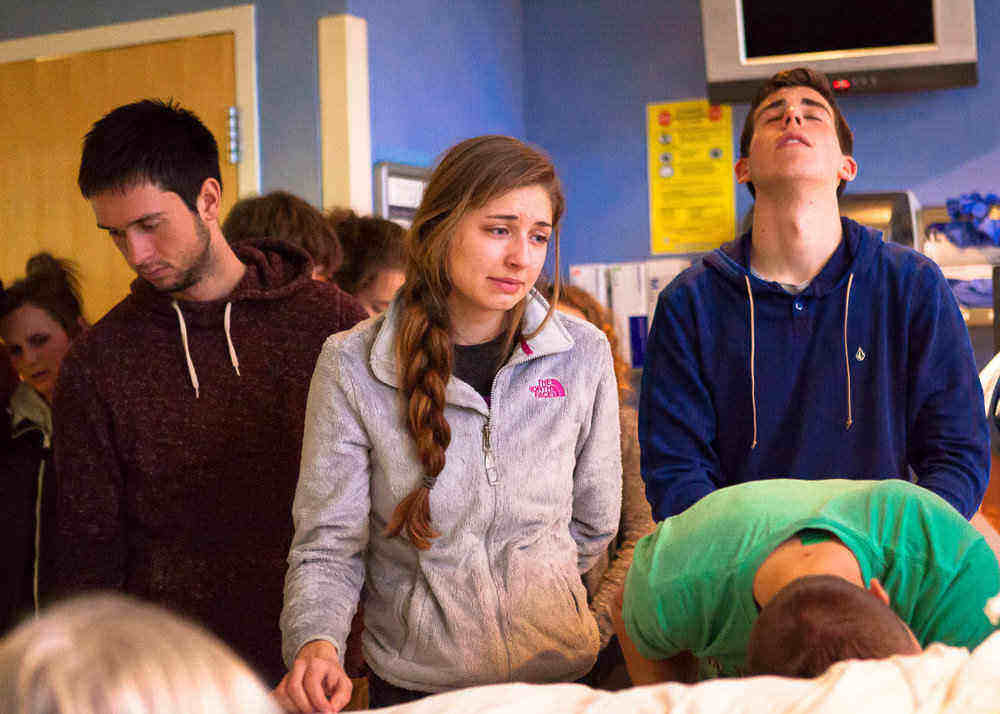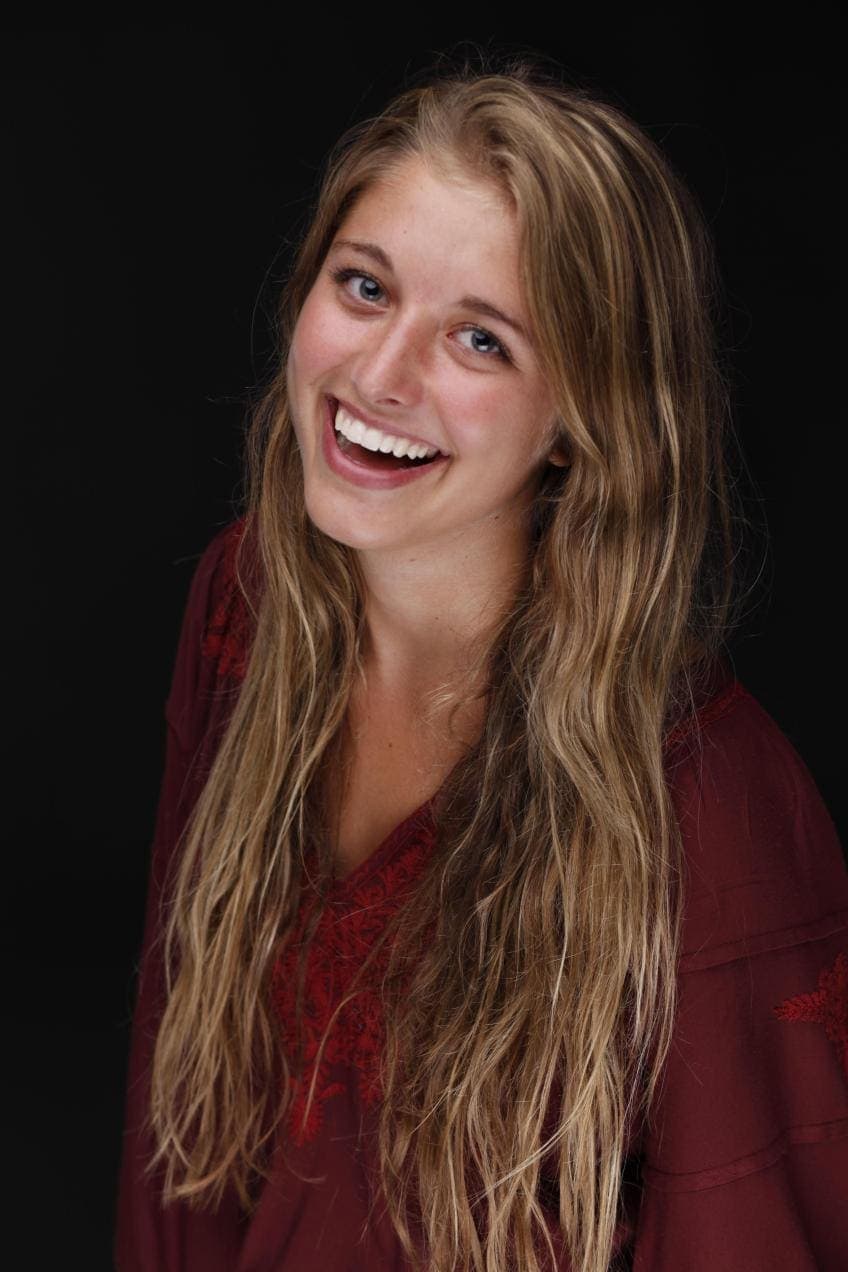
Editor's note: This story is reprinted with the permission of the Chinook Observer newspaper in Long Beach, Washington, and the author, Natalie St. John, a cousin of Walla Walla University student Madison Jewell Baird who died in a car accident last year.
On Feb. 14, 2015, my 20-year-old cousin, Madison Jewell Baird, gave her heart to a 13-year-old girl. It had nothing to do with romance, but it was an act of incredible generosity and love.
Madison was hit by a truck on the evening of Feb. 10 as she rode her bike on a country road outside Walla Walla, Washington. Her accident occurred just 15 days after my stepfather’s brother, Stanley Morrison, suffered a severe cerebral hemorrhage. Both accidents caused brain-death. Even though their bodies were mostly healthy, they had no chance of recovery.
Stan and Maddy were both registered organ donors, and over the course of three terrible weeks, the members of my extended family got a crash-course in the delicate, complex and high-stakes process of organ donation and placement — and we discovered that in the midst of tragedy, organ and tissue donation makes it possible to find hope and create opportunity for others.
After Stan’s death, I wanted to write a story about how the process works in the U.S. state of Washington. A spokeswoman at LifeCenter Northwest, the nonprofit that matches donors with recipients in Alaska, Montana, northern Idaho, and Washington, encouraged me to interview one of the advocates who work with donor families.
Before I could set up the interview, Maddy had her accident. Through a surreal coincidence, I suddenly found that I had become a character in my own news story. When Maddy was declared brain-dead in a Seattle trauma ward on Feb. 11, the man I was supposed to interview, grief counselor Jonathan Merker, was assigned to help our family navigate the donation process.
On the day of her accident, Maddy was a sophomore at Walla Walla University. She was a spirited goofball, a heartbreaker, an avid outdoors enthusiast, and a devout Seventh-day Adventist. She had her father’s quick wit and energy, and her mother’s kindness and poise.
“I believe in heaven, so I know that in my belief, I will see her again,” Maddy’s mother, Lisa Giebel said Feb. 9, 2016. “But this morning, I couldn’t help remembering that last year at this time, everything was perfect as far as my kids and life.”
That afternoon, the sun came out for the first time in a while, and Madison decided to go for a bike ride.
After the accident, medics put her on life-support, and she was airlifted to the trauma critical care ward at Seattle’s Harborview Hospital.
She never made it home.

By the following morning, a huge crowd of Maddy’s supporters from Walla Walla’s tight-knit Adventist community had taken over the lobby of the trauma ward. I had spent the long drive to Seattle mentally preparing to see my cousin on her deathbed, but I hadn’t given any thought to how it would feel to see the living. I took one look at all of those exhausted and heartbroken students, and her little sister, Josie, who was as poised and gracious as ever on the worst day of her life, and burst into tears.
Maddy’s loved ones crowded around her bed at nearly all hours. They held her, talked to her, prayed over her. One afternoon, her friend played the old country hymn “Wayfaring Stranger,” and a group of at least 20 people sang to her. That Thursday evening, the Walla Walla University choir arrived and filled the ward with beautiful, solemn music.
“My belief is that she knew on a cellular level that I was there. She heard my voice and it had to calm her down. It had to give her peace,” Giebel said.
Gradually, everyone began to accept that Maddy was not going to recover. When a nurse brought up organ donation, Giebel was immediately supportive because she knew it was what Maddy wanted.
“My heart wanted a miracle,” Giebel said. “But if not, then it should be somebody else’s miracle.”
Read Walla Walla University Student Dies After Crash
It is now possible to transplant most major organs, as well as bone, corneas and skin, and transplant success rates are steadily improving. Washington has one of the country’s highest donor registry participation rates, but the need for organs is still huge, LifeCenter spokeswoman Cate Oliver said.
Only a tiny percentage of people in the registry ultimately become donors, because a person generally has to experience total brain-death in a hospital setting to be eligible, and quality standards for transplant organs are very strict, Oliver said.
Based in Seattle, LifeCenter is one of 58 federally designated “organ procurement organizations.” It finds matches for organs and tissue, coordinates transplant surgeries, supports donor and recipient families during the process and provides follow-up counseling and other after-care services.
Donors can only stay on life support for a few days, and most organs can only survive outside of the body for a few hours. So the moment a hospital identifies an eligible donor, LifeCenter staff begin racing to make a maddeningly complex process happen within a very short window of opportunity. One team finds potential recipients, and gets them ready for transplant surgery. A team of grief counselors helps the donor’s family and friends through the donation process. Meanwhile, a team of medical experts evaluates and preserves the donor’s organs, finds a surgeon and a hospital who can do the transplant in time, and transports the organs to the receiving facilities.
There are hundreds of variables, and the process is grueling for everyone involved, Oliver said. And yet, LifeCenter staff coordinated donations from 200 organ donors in 2015. They estimate that those donations saved 640 lives. They also coordinated more than 500 tissue donations, and those have the potential to improve thousands of lives.
On Feb. 11, the preparations for organ recovery began.
In private, doctors put Maddy through a battery of tests to confirm that there was no activity of any kind in her brain, and LifeCenter coordinators briefed her parents on how the search for matches was going.
Grief counselor Jonathan Merker arrived at the hospital and stayed there for most of three days. One afternoon, we watched as Merker presented a memorial quilt to Maddy’s immediate family, and helped them place her handprints on the quilt. Her friends decided they wanted prints too, and soon, every flat surface in the room was covered in papers bearing Maddy’s handprints.
For Lisa Giebel, the opportunity to share her sense of loss with the others was “priceless.”
“Choosing [the donation] gave us time to say goodbye,” Giebel said.
Merker spends a lot of time educating grieving families about organ and tissue donation. In a tiny, fluorescent-lit room, he patiently and honestly addressed each of our concerns: Had the hospital done everything possible to save her? Would the recovery surgery hurt her? Would we get to find out if the transplants were successful? Could we meet the recipients?
As we talked, I noticed that Merker had tears in his eyes. Later I wondered how anyone could do his job, and not be harmed by it.
In a recent phone interview, Merker, who now works at a New Jersey organ procurement organization called the NJ Sharing Network, said he realized during grad school that he had a knack for counseling people confronting death. Volunteer work, intensive therapy, and special training helped him feel at ease serving as a source of strength and compassion during the worst of times.
“I’ve never once had the same day at my job, and I have a vast amount of intimate experience with families,” Merker said. “I don’t know where else I would find that kind of meaningful intimate connection with people, and I love it.”
Merker said he was able to feel the powerful sense of loss surrounding Maddy without losing himself, because he knows himself extremely well, takes very good care of his health, and plays whenever he can.
“There’s a lot of really beautiful and very raw feelings there. I can experience all that while simultaneously holding that this is not my loss, this is not my community,” Merker said.
By the morning of Friday, Feb. 13, recipients had been lined up. In a few hours, Maddy would be wheeled into an operating room.
That wait was agonizing, but it was also precious, Giebel said.
As the morning wore on, we each went in to say a final goodbye. Some people prayed, others recalled memories, some people said the long-held secret things they wanted her to know.
When my turn came, I rested my head next to hers and held her hand. It was still warm, and she was still beautiful to me, but I understood that it was time.
I shared messages from my sister and cousins who couldn’t be there. I used my last moment with Maddy to sing an a cappella lullaby I remembered singing to her when she was a little girl.

There’s a little bird somebody sends
down to the earth to live on the wind
Born on the wind
and she sleeps on the wind
This little bird that somebody sends
In the operating room, LifeCenter staff read a statement.
“Sometimes the [surgeons] will stop to bow. Sometimes they have a tear in their eye. They will honor the sacredness of what it means to give the gift of life to another person,” Merker said.
When the surgery is over, LifeCenter staff call the donor’s family to let them know how it went. They also follow up periodically, to share news of how their loved one’s organs were used.
There are no guarantees. Sometimes doctors find that a donor’s organs weren’t as healthy as they thought. Sometimes a transplant doesn’t take.
Some recipients immediately want to start corresponding with the donor’s family. Occasionally, both parties even want to meet, and after careful preparation, LifeCenter will facilitate a reunion. But other recipients struggle with intense guilt and pressure and never feel ready to write.
Both families experience what Merker calls “a complicated hope.”
One year later, we know that Stanley’s liver went to a 65-year-old man. His kidneys went to two recipients who no longer have to undergo dialysis. His heart and lungs went to research, and his corneas may someday help someone else see.
Madison was a physically fit vegan who never drank or did drugs, and had no piercings or tattoos, and that made it possible for her to donate most of her organs. Her right kidney went to a grandpa who is able to take long walks with his dog for the first time in ages. Her liver went to a father in his fifties who is grateful to be able to lead a more normal life. Her pancreas went to a married, 30-something father of three. Her lungs and left kidney went to research, and her bone and soft tissue could eventually help many sick and injured people. And as far as we know, her heart is still beating in the chest of a teenaged girl who is thrilled that she was able to return to school.
I still struggle to reckon with last year’s tragedies, but it’s incredible to think that another young woman’s mother can put her ear to her daughter’s chest, and hear Madison’s vitality creating new hope.
“She has touched people’s hearts because she was a lover of people. She loved people, she loved God. She lived an amazing life,” Lisa Giebel said. “That was contagious and it was something that we all have the ability to do, just by being more loving.”